From Mark Twain’s house to the Oregon Shakespeare Festival, here are 5 suggestions for some special literary adventures for our fellow book lovers, excerpted from the recently revised edition of Patricia Schultz’s 1,000 Places to See in the United States & Canada Before You Die.
Mark Twain House
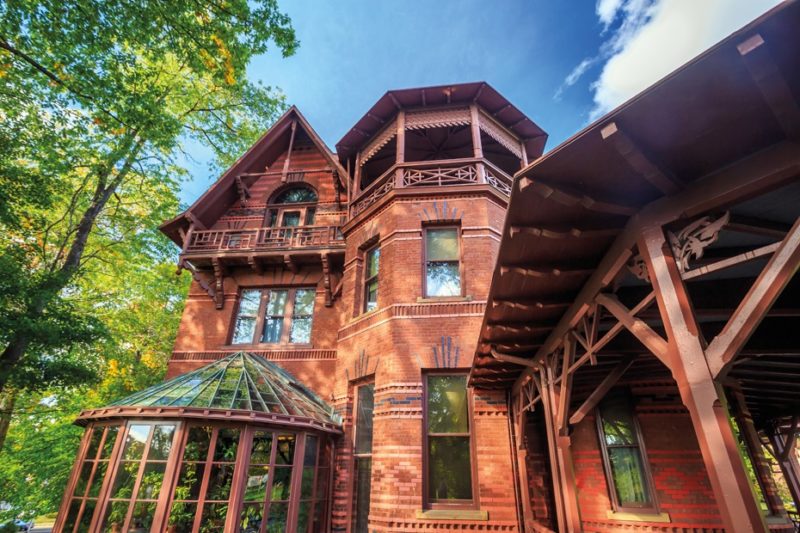
Hartford, Connecticut
Literary fans come from around the world to visit the home of beloved author Samuel Clemens, aka Mark Twain, a pen name he derived from the term used by Mississippi River pilots to indicate a water depth of two fathoms. “To us,” Twain said, “our house … had a heart, and a soul, and eyes to see us with.… It was of us, and we were in its confidence, and lived in its grace and in the peace of its benediction.”
Although more commonly associated with his hometown of Hannibal, as an adult the Missouri-born Twain always held this home in Hartford’s Nook Farm neighborhood in a special light. The custom-designed High Victorian home was commissioned from well-known New York architect Edward Tuckerman Potter with input from Twain’s wife, Olivia. Twain lived here with his family from 1874 to 1891, during which he penned some of his most acclaimed works, including The Adventures of Tom Sawyer, The Adventures of Huckleberry Finn, and A Connecticut Yankee in King Arthur’s Court. The beautifully restored 25-room home features decorative work by Louis Comfort Tiffany and many of the family’s original furnishings, including the carved wooden bed in which Twain died. Guided tours point out personal items, including the 3-ton Paige typesetter, an ill-fated invention in which Twain invested, leading to his bankruptcy. A striking contemporary museum stands adjacent to the house, further detailing the life and times of this master storyteller—a key feature is a small theater showing a 22-minute Ken Burns film biography.
Nearly across the street, the Harriet Beecher Stowe Center celebrates the legacy of the author of the greatest antislavery novel of all time, Uncle Tom’s Cabin, considered to be the first international best seller. This compound is anchored by the brick Gothic Victorian “cottage” (though substantial, it is not nearly as grand as neighbor Twain’s) where the author resided from 1873 until she died in 1896. Guided tours provide insights into Stowe’s abolitionist politics and then-revolutionary social views.
Mark Twain House. Where: 115 miles northeast of New York City. Tel 860-247-0998. When: daily, Apr–Feb; closed Tues in Mar. Harriet Beecher Stowe Center: Tel 860-522-9258. Best time: Christmastime, when the Mark Twain House is decked out in holiday splendor.
Eudora Welty House
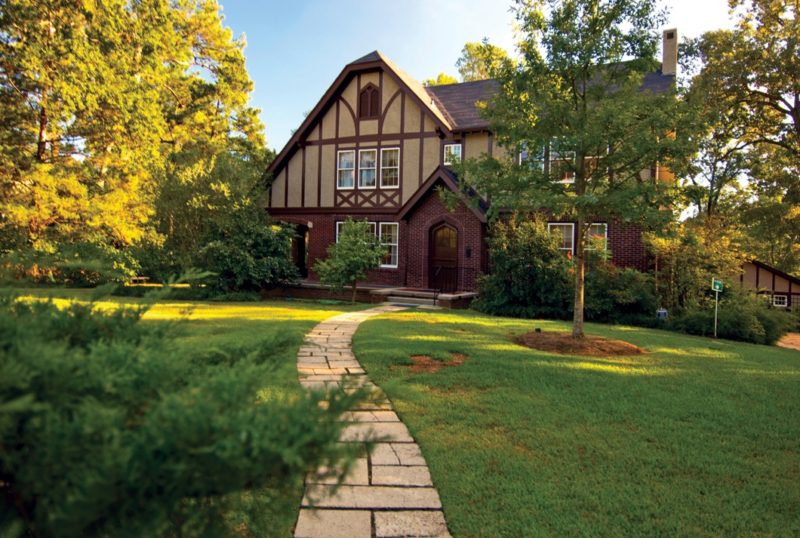
Jackson, Mississippi
A massive oak tree shades the front yard of the 1925 Tudor-style home where Pulitzer Prize-winning author Eudora Welty spent an idyllic childhood and most of her adult life, and which is considered one of the most intact literary homes in America. Graceful and grand, the tree might be seen as a metaphor for Welty, known for her genteel nature, hospitality, and humility, despite her stature as one of the great American writers of the 20th century.
In 1936, the 27-year-old Welty published her first short story, “Death of a Traveling Salesman,” and today she is regarded as a master of the form. Her early novels include Delta Wedding (1946) and The Ponder Heart (1954). The winner of many awards, she received her Pulitzer for fiction in 1973 for The Optimist’s Daughter. All her success—and her abiding affection for her Mississippi home—made her the pride of Jackson until the day she died in 2001 at the age of 92.
Welty left her home, books, and letters to the Mississippi Department of Archives and History, and it is now open for visits. She was 16 and ready to start college when her family moved here. She transferred to the University of Wisconsin and then to Columbia University in New York. Unable to find a job at the height of the Depression, she returned to Jackson in 1931, shortly before her father died. She lived in the family house with her mother, Chestina.
Original furnishings fill the two-story dwelling. The living room was the site of Welty’s Christmas morning eggnog-filled open-house celebrations (whiskey was a key ingredient). Other glimpses of Welty’s literary life include a bedroom turned into an office, and the dining room table where she often spread out her manuscripts in progress, cutting out a single sentence or a paragraph and repositioning it with straight pins.
Welty and her mother were both avid gardeners, and tended lovingly to the plants and flowers in the home’s leafy backyard. The trellised gardens designed by Chestina have been carefully restored to how they appeared from 1925-1945. Various garden rooms are filled with camellias, roses, and bulbs, and evoke the gentler time and place so prevalent in Welty’s written works.
Eudora Welty House. Where: 1119 Pinehurst St. Tel 601-353-7762. When: tours offered Tues–Fri; visitor center open Mon–Fri. Best times: Apr for dogwood and roses; Dec–Mar for camellias.
Oregon Shakespeare Festival
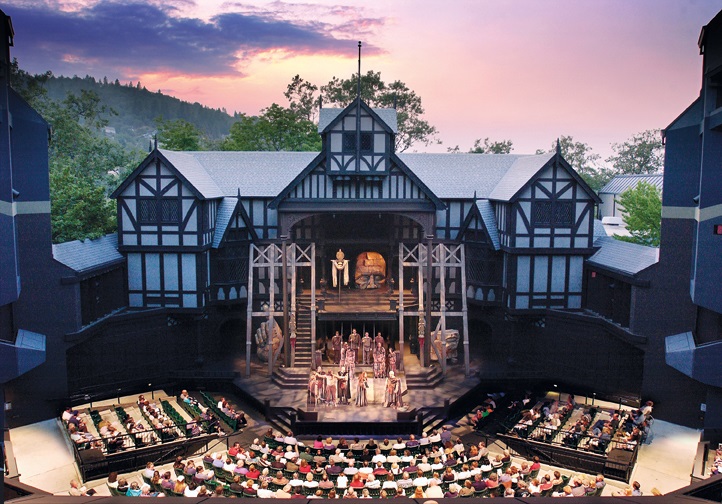
Ashland, Oregon
“Gentles, perchance you wonder at this show; but wonder on, till truth make all things plain,” wrote William Shakespeare about the magic of theater—abundantly on display each year at the Oregon Shakespeare Festival (OSF), the largest and longest-running celebration of the Bard in America. Today, upwards of 400,000 theater lovers come to Ashland each year to attend performances at the festival’s three venues, including the outdoor Elizabethan Theatre, which seats 1,200 and is fashioned after a 17th-century English theater. The Tony Award-winning festival, which has staged performances in Ashland since the 1930s, is home to the biggest rotating repertory theater in the country. The festival’s success unquestionably derives from the excellence of its productions, but is aided too by the charm of Ashland, a small, colorful city 15 miles north of the California border that has become the cultural—and gastronomic—center of southern Oregon.
While the festival repertory here is rooted in Shakespeare, it also features revivals and contemporary theater from around the world. In addition to 11 plays presented annually, from mid-February through October, there are also backstage tours, lectures and discussions led by actors and scholars, and alfresco concerts of Renaissance music and dance.
Ashland’s main streets buzz with well-heeled shoppers and youthful bohemians. From the town’s central plaza, lovely Lithia Park winds up along Ashland Creek; park trails meander for miles past swans, picnickers, and declaiming thespians, and there are day trips galore in the mountainous region of southern Oregon, from visits to nearby vineyards to skiing at Mount Ashland in the white months.
Of Ashland’s dozens of historic B&Bs and small inns, the Peerless Hotel is a favorite. Built in 1900 as a railroad workers’ boardinghouse, the beautifully updated Peerless now offers tastefully appointed rooms with luxurious comforts. These take a backseat to the eponymous restaurant next door, one of the best in town. An inventive cuisine fashioned from the bounty of local farms and ranches is paired with an award-winning wine list heavy with Oregon’s finest.
Oregon Shakespeare Festival. Where: 285 miles south of Portland. Tel 541-482-4331. Cost: tickets from $30. When: Feb–Oct. Peerless Hotel & Restaurant: Tel 541-488-1082 (hotel), 541-488-6067 (restaurant). Cost: from $92 (off-peak), from $174 (peak); dinner $45. Best times: May–Oct for weather; July 4th for live music, a food and crafts fair, an old-fashioned parade, and fireworks.
Naulakha, Home of Rudyard Kipling
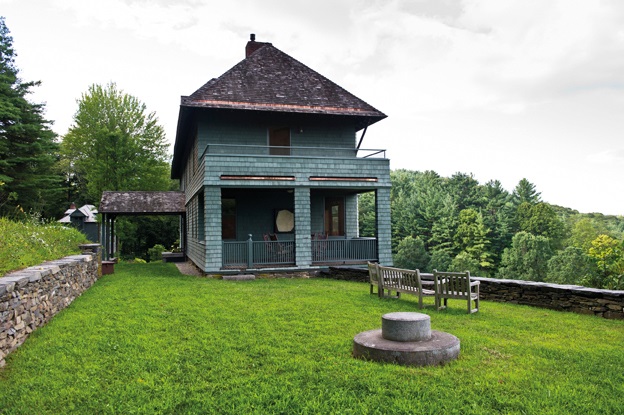
Dummerston, Vermont
One of Vermont’s greatest surprises is the perfectly preserved home (right down to the golf clubs left behind) of Rudyard Kipling, the British author and poet who became a literary sensation by lifting his late-Victorian readers out of their tufted armchairs and dropping them into exotic, richly imagined landscapes. He is best known for The Jungle Book, which was inspired by his upbringing in India but was actually written in Vermont, where he lived between 1892 and 1896 with Caroline Balestier. Rudyard married Caroline at age 26 after his best friend, her brother Wolcott, died suddenly of typhoid fever.
Kipling’s home, called Naulakha, a Hindu word literally meaning “900,000 rupees” but loosely translated as “jewel beyond price,” was restored in the 1990s by Landmark Trust USA, which rescues historic properties in distress. Although not open for tours, it can be rented as an overnight literary getaway. Imagine playing on Kipling’s own billiards table, or enjoying the same window-framed views he described as “lavish and wide.”
The green-shingled farmhouse surrounded by 12 acres was named for a novel Kipling and Wolcott Balestier had written together. Gleaming with polished woods, it is simply but pleasantly furnished with Kipling’s own wicker furniture, iron bedsteads, and Oriental rugs. “Three miles from anywhere and wonderfully self-contained,” as Kipling wrote, the house—long and narrow and intended to resemble a ship—appears to be “riding on its hillside like a little boat on the flank of a far wave.”
Both Jungle Books were written here as was Captains Courageous, but the family soon returned to England when Kipling’s relationship with Caroline’s other brother, a loudmouthed drinker, went sour.
Kipling remarked of nearby Brattleboro, “the town has little to do,” but things have picked up since then. Located 4 miles down the road, Brattleboro is Vermont’s first permanent settlement, begun in 1724 as a fort to protect against Indian raids. Today it has a population of 12,000 and a college town air (without the college) that attracts alternative thinkers and political activists. Against a New England backdrop of white steepled churches and noble maples, its post-hippie capitalist vibe of art galleries, bookstores, and brewpubs promises a pleasant stay.
Naulakha. Where: 108 miles northwest of Boston. Tel 802-254-6868. Cost: from $275 (off-peak), from $425 (peak), sleeps up to 8, minimum 3-night stay. Visitor info: Tel 877-254-4565 or 802-254-4565. Best times: in Brattleboro, 1st weekend in June for the Strolling of the Heifers Festival; 1st weekend in Oct for Literary Festival.
Library of Congress
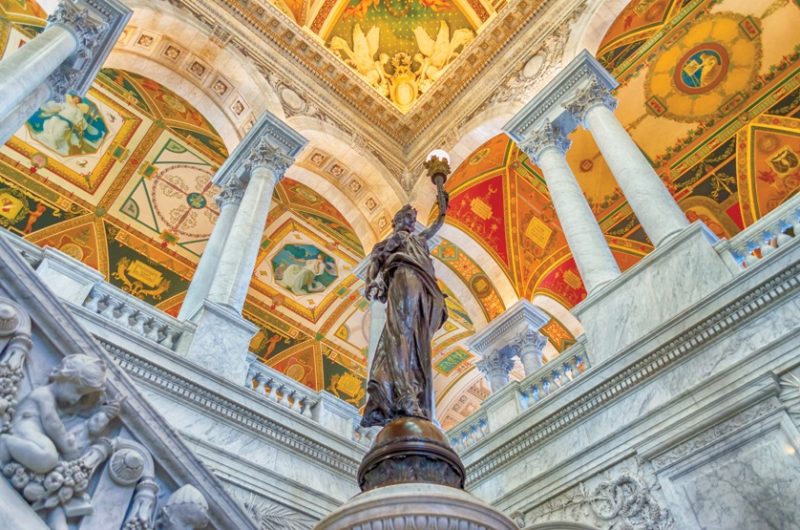
Washington, DC
This is the country’s official library and the world’s largest. Close to 38 million books are here—as well as 70 million manuscripts, 14 million photographs, 5.5 million maps, 3 million recordings, and millions of prints, drawings, and other items, filling more than 838 miles of shelves.
The library was established by an act of Congress in 1800, but its original collection of 964 books and nine maps went up in smoke when British soldiers burned the Capitol in 1814. Former president Thomas Jefferson offered his own comprehensive library of 6,487 books as a replacement, arranged under three main headings: Memory (history), Reason (philosophy, including law, science, and geography), and Imagination (fine arts, including architecture, music, literature, and sports). You can even see a recreation of Jefferson’s library with the collection he sold for $23,950. That was the seed from which the current collection grew … and grew. Today, some 15,000 items arrive at the library every day, of which approximately 12,000 become part of the permanent collection.
The library is now housed in three main buildings, but visitors in search of history should concentrate on the Jefferson Building. It’s absolutely astounding, with its grand marble Great Hall illuminated by stained-glass skylights in a 75-foot ceiling and its stunning Main Reading Room topped by an ornate 160-foot dome. Any adult with an ID can get a free “reader identification” pass to read books on the premises. The Main Reading Room is your entrée to the collection, which is primarily kept in closed stacks. Library staff will collect what you need.
If you don’t want to sit down and read, you can just drop in to peruse the architecture and the library’s permanent and temporary exhibitions. Exploring the Early Americas uses rare maps, documents, paintings, prints, and artifacts to explore indigenous cultures, their dramatic which approximately 12,000 become part of the permanent collection.
The library is now housed in three main buildings, but visitors in search of history should concentrate on the Jefferson Building. It’s absolutely astounding, with its grand marble Great Hall illuminated by stained-glass skylights in a 75-foot ceiling and its stunning Main Reading Room topped by an ornate 160-foot dome. Any adult with an ID can get a free “reader identification” pass to read books on the premises. The Main Reading Room is your entrée to the collection, which is primarily kept in closed stacks. Library staff will collect what you need.
If you don’t want to sit down and read, you can just drop in to peruse the architecture and the library’s permanent and temporary exhibitions. Exploring the Early Americas uses rare maps, documents, paintings, prints, and artifacts to explore indigenous cultures, their dramatic encounters with European explorers and settlers, and the world-changing results. Exhibitions are rotated in and out of public viewing for preservation reasons, but you can also see them online (loc.gov/exhibits). Other displays include a Gutenberg Bible (one of three perfect copies on vellum); the Gershwin Room, with the composer’s piano, music manuscripts, and other artifacts; and Bob Hope’s memorabilia, including his 85,000-page Joke File.
Library of Congress. Where: 1st St. SE, between Independence Ave. and E. Capitol St. Tel 202-707-8000 (general info) or 202-707-0919 (tour info). When: closed Sun; free guided tours daily. Best times: evenings at the Mary Pickford Theater in the Madison Building for showings of films from the museum’s collection (check calendar).
 About the Book:
About the Book:
Covering the U.S.A. and Canada like never before, and for the first time with full-color photographs, here are 1,000 compelling, essential, offbeat, utterly unforgettable places. Pristine beaches and national parks, world-class museums and the Just for Laughs festival, mountain resorts, salmon-rich rivers, scenic byways, the Oyster Bar and the country’s best taco, lush gardens and coastal treks at Point Reyes, rafting the Upper Gauley (if you dare). Plus resorts, vineyards, hot springs, classic ballparks, the Talladega Speedway, and more. Includes new attractions, like Miami’s Pérez Art Museum and Manhattan’s High Line, plus more than 150 places of special interest to families. And, for every entry, what you need to know about how and when to visit.
“Patricia Schultz unearths the hidden gems in our North American backyard. Don’t even think about packing your bag and sightseeing without it.” —New York Daily News
Buy the Book
Amazon | B&N | Indiebound | Workman

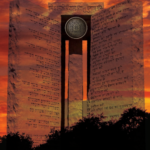
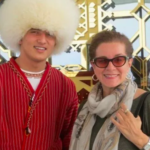
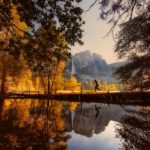
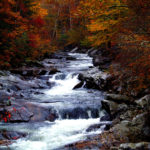
No Comments